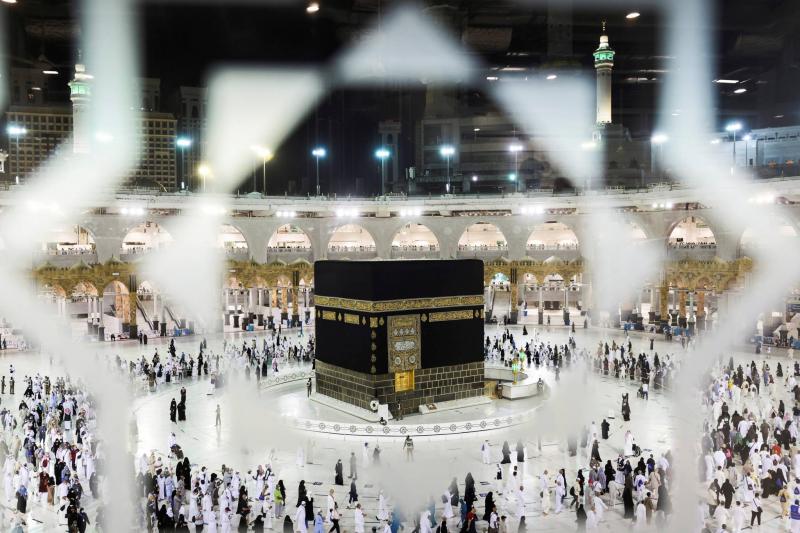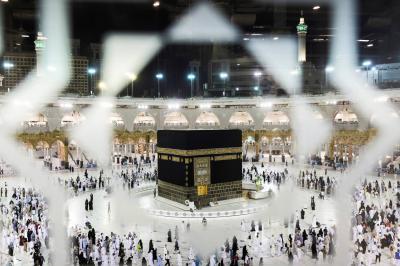Hundreds of thousands of pilgrims performed the "Tawaf al-Qudum" around the Holy Kaaba in the city of Mecca on Sunday, marking the beginning of the Hajj rituals, which are at levels similar to those before the COVID-19 pandemic. The streets of Mecca overflowed with thousands of pilgrims from all nationalities, as Saudi Arabia allowed Muslims to perform the Hajj this year without any restrictions on the number of pilgrims or their ages.
On Saturday, pilgrims dressed in white ihram garments circumambulated the Kaaba, many carrying umbrellas for protection from the sun, while others prayed and made supplications on the white marble floors, which were scented with musk. More than 1.6 million pilgrims from outside the Kingdom have already arrived, according to Saudi authorities on Friday. This number already exceeds the total number of pilgrims from last year significantly, while the numbers of domestic pilgrims have yet to be announced.
Saudi authorities expect the participation of more than 2 million pilgrims from 160 countries this year. Last year's Hajj was limited to 926,000 pilgrims, including 781,000 from abroad, after two years of restrictions that allowed only a few thousand residents of the Kingdom due to the coronavirus pandemic. In 2019, approximately 2.5 million Muslims from around the world participated in the Hajj.
After three years of limited Hajj, Saudi facilities and religious sites are once again bustling with pilgrims. There is no room in the markets or restaurants, which were nearly empty during the pandemic. The streets surrounding the Grand Mosque are filled with thousands of pilgrims praying on colorful rugs in front of hotels and shops.
Starting from Sunday evening, large numbers of pilgrims will move to Mina, about 5 kilometers from the Grand Mosque, ahead of the main rituals on Tuesday, which include ascending Mount Arafat. Authorities have set up numerous health facilities and mobile clinics, equipped ambulances, and deployed 32,000 paramedics to meet the needs of the pilgrims.
Fire trucks with their distinctive yellow colors are spread throughout the area, and police officers have established checkpoints and are patrolling on foot while carrying white umbrellas for protection against the sun. Security personnel are spraying water mist on pilgrims exhausted from the heat, while some have spread out in the squares adjacent to the mosque doors.
Inside the Grand Mosque, paramedics stand ready at various locations, while young volunteers push wheelchairs and are awaiting in long queues to assist the elderly and sick who cannot walk long distances. Many pilgrims have placed the names and flags of their countries on their clothing. Asian and African female participants wore distinctive colorful abayas.




